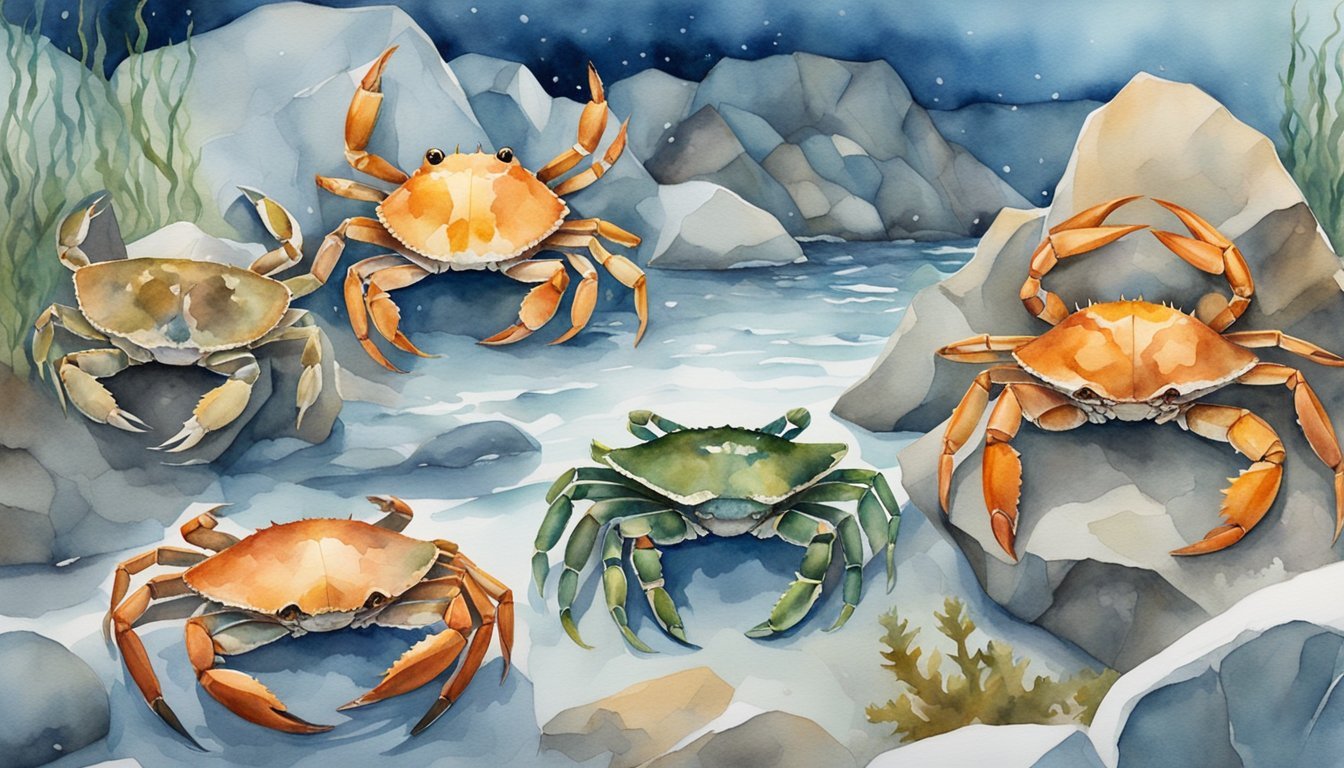Understanding Alaska Crab Species

Alaska’s rich marine ecosystems are home to a variety of crab species known for their taste and size, such as the snow crab and the red king crab. This diverse group of crustaceans plays a crucial role in both the ecology and the economy of the region.
Diversity of Crab Types
Alaska’s waters house several species of crabs, with some of the most well-known being the snow crab (Chionoecetes opilio) and the red king crab. The snow crab, also recognized as the opilio, is a vital component of the Alaskan crabbing industry, especially after they contributed to the state’s recovery when the king crab fishery declined. On the other hand, red king crabs have been celebrated for the significant economic return they have provided through decades of fishing in the region.
Physical Characteristics
Crabs found in Alaska feature notable physical differences that aid in identification and harvesting. The red king crab, for instance, can have a leg span of five feet and males can weigh up to 24 pounds. These crabs are identified by their large size and thick, spiny legs. Snow crabs boast a slightly different appearance, with Tanner Crabs like the Bairdi variety being recognized for their flavor and texture.
Crab Habitats and Distribution
Crabs in Alaska inhabit various areas, with some species like the red king crab residing in the Bering Sea’s waters. The distribution of these creatures often includes the eastern Bering Sea, which provides suitable cold-water habitats crucial for their life cycles. Juvenile crabs often rely on sea ice for protection during their early stages. It is these habitats in the Alaskan waters that allow the crabs to thrive, making Alaska a primary region for their growth and fishing.
Alaska Crab Fisheries Challenges
Alaska’s crab fisheries face severe challenges ranging from environmental changes affecting crab populations to socioeconomic impacts on local communities and the pressure to implement effective conservation and management strategies.
Environmental Impacts on Crab Populations
The Bering Sea, home to Alaska’s snow crab fishery, has experienced dramatic environmental shifts. A significant population crash has been linked to warming waters and marine heat waves, phenomena often associated with human-caused climate change. Researchers studying these ecosystems have observed higher mortality rates, which they attribute to factors such as starvation and disease. These changes have compounded the existing stressors on the snow crab populations.
Socioeconomic Effects on the Fishing Community
The decrease in crab populations has serious repercussions for the fishing industry, affecting the revenue and livelihood of local crabbers. When authorities such as the Alaska Department of Fish and Game cancel the crab harvest season, the fallout is felt across the community, from individual fishers to seafood distributors. The economic stability of these communities is deeply intertwined with the health of crab fisheries, which makes the current challenges particularly alarming.
Conservation and Management Efforts
In response to the ecological and economic crises, conservation movements and fishery management efforts are being implemented. The National Oceanic and Atmospheric Administration (NOAA) along with local authorities are conducting further research to understand the root causes of the declines. Measures such as limiting catch size, closing fisheries during population drops, and studying the crabs’ food sources are all aimed at mitigating the impact of these challenges and ensuring the future sustainability of the crab populations.

